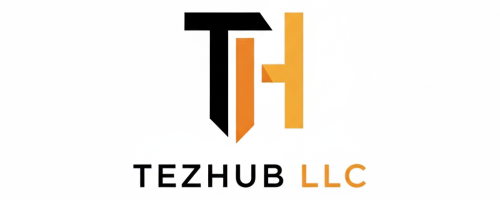In today’s fast-paced and ever-evolving marketplace, businesses face the challenge of meeting diverse consumer needs. One powerful strategy that has emerged is product customization. This article delves into what product customization is, its various forms, and the benefits it offers to both consumers and businesses.
What Is Product Customization?

Product customization refers to the process of allowing customers to modify or personalize a product according to their preferences. This can involve a range of options, including changes in design, color, size, features, and even functionality. Unlike mass-produced products, which are standardized, customized products cater to the unique tastes and requirements of individual customers.
Types of Product Customization
- Mass Customization: This approach combines the efficiency of mass production with the personalization of customization. Companies produce a base product and allow customers to select various options to tailor it to their needs. Examples include customizable sneakers and vehicles.
- Configurators: These are online tools that enable customers to design their products in real-time. Users can select features, colors, and materials, allowing for a highly personalized shopping experience. Car manufacturers often employ configurators to let customers build their ideal vehicles.
- Bespoke Customization: This is the highest level of customization, where products are made entirely from scratch to meet specific customer requests. This approach is common in luxury markets, such as tailored suits or custom jewelry.
- User-Generated Customization: In this model, customers create or design products themselves. This can include personalized gifts, handmade crafts, or digital products like software or websites. Platforms like Etsy exemplify this trend, enabling creators to showcase their unique designs.
The Benefits of Product Customization
1. Enhanced Customer Satisfaction
One of the most significant advantages of product customization is the increase in customer satisfaction. When consumers can create a product that aligns perfectly with their preferences, they are more likely to feel a sense of ownership and fulfillment. This personalized experience can transform a mundane purchase into a memorable one, fostering emotional connections with the brand.
2. Increased Brand Loyalty
Personalization leads to stronger brand loyalty. When customers receive products tailored to their specific needs, they are more likely to return for future purchases. This loyalty is driven by the sense that the brand understands and values their individual preferences. Businesses that prioritize customization often find themselves with a dedicated customer base, resulting in repeat sales and positive word-of-mouth referrals.
3. Competitive Advantage
In a crowded marketplace, standing out is crucial for success. Product customization offers a unique selling proposition that can differentiate a brand from its competitors. By providing options that allow customers to tailor their products, businesses can attract consumers seeking individuality. This competitive edge can be particularly valuable in industries where standardization prevails.
4. Higher Profit Margins
Custom products often command higher prices than their mass-produced counterparts. Customers are generally willing to pay a premium for items that reflect their style or needs. This willingness to invest in tailored products allows businesses to achieve higher profit margins, making customization a financially viable strategy.
5. Better Market Insights
Engaging in product customization enables companies to gather valuable data on consumer preferences. By analyzing the choices customers make during the customization process, businesses can gain insights into trends and demands. This information can inform future product development and marketing strategies, allowing companies to stay ahead of the curve.
6. Increased Customer Engagement
The customization process encourages active participation from customers, fostering a sense of involvement and engagement with the brand. This interaction can lead to a more meaningful relationship, as consumers feel they have a role in the creation of the product. Engaged customers are more likely to share their experiences, promoting brand visibility and awareness.
7. Flexibility in Product Offerings
Product customization allows businesses to be more adaptable in their offerings. Instead of being tied to a rigid product line, companies can cater to various customer needs by providing a wide range of customizable options. This flexibility can help businesses respond quickly to changing market demands and trends.
Challenges of Product Customization
While the benefits of product customization are compelling, it is essential to acknowledge the challenges associated with implementing such strategies.
1. Increased Production Complexity
Customizing products often leads to more complex production processes. Businesses must manage a variety of options and configurations, which can complicate supply chain logistics and inventory management. Ensuring that all components are available for customization may require additional resources and planning.
2. Potential for Higher Costs
While custom products can command higher prices, the initial costs associated with setting up customization processes may be significant. Investments in technology, training, and materials can strain a business’s resources, especially for smaller companies. It is crucial to find a balance between offering customization and maintaining profitability.
3. Longer Lead Times
Customized products typically require longer lead times due to the need for personalization. Customers may have to wait longer for their tailored items, which can lead to frustration if expectations are not managed effectively. Clear communication regarding timelines is vital to ensure customer satisfaction.
Best Practices for Implementing Product Customization

To successfully implement product customization, businesses should consider the following best practices:
1. Understand Your Audience
Before introducing customizable options, it’s essential to understand your target audience. Conduct market research to identify customer preferences and pain points. This insight will guide your customization strategy, ensuring it aligns with consumer desires.
2. Invest in Technology
Utilizing the right technology is crucial for enabling effective customization. Online configurators, user-friendly interfaces, and efficient production systems can streamline the process and enhance the customer experience. Investing in technology can help mitigate some of the complexities associated with customization.
3. Simplify Choices
While offering a wide range of customization options is appealing, too many choices can overwhelm customers. Strive for a balance by providing a manageable selection of options that still allow for personalization. Clear categorization and guided choices can help simplify the decision-making process.
4. Communicate Clearly
Effective communication is key to managing customer expectations. Provide detailed information about customization options, pricing, and lead times. Keeping customers informed throughout the process can enhance their experience and reduce frustration.
5. Gather Feedback
After implementing customization options, actively seek customer feedback. Understanding their experiences and suggestions will help you refine your offerings and address any issues that may arise. Continuous improvement based on customer input can lead to greater satisfaction and loyalty.
Conclusion
Product customization is a powerful strategy that allows businesses to meet the unique needs of their customers. By offering personalized options, brands can enhance customer satisfaction, foster loyalty, and gain a competitive edge. While challenges exist, the benefits often outweigh the drawbacks, making customization a worthwhile investment for many businesses. By understanding their audience, leveraging technology, and communicating effectively, companies can successfully navigate the world of product customization and thrive in an increasingly personalized marketplace.

